Here is the list of the most popular traditional dances in Malaysia, some of which are tribal dance forms.
1. Joget
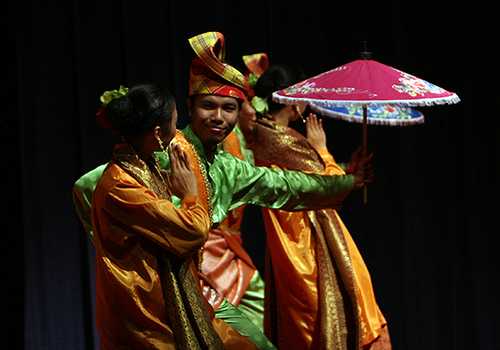
General Tradition
This Malay dance form is usually performed by couples who appear to be playfully teasing each other. The beauty of the dance lies in the fact that the couple does not touch each other as they make rhythmic hand and foot movements.
The Musical Element
Joget is performed on a quick tempo with duple and triple beat divisions. Joget music draws elements from Chinese, Indian, Western and Arabic music. This happy dance involves the use of a violin, an Asian gong, flute along with at least two Rebana (Malaysian Tambourine). Joget dance form has various renditions, but Joget Lambak is a hot favourite when it comes to ceremonies and social gatherings.
2. Zapin
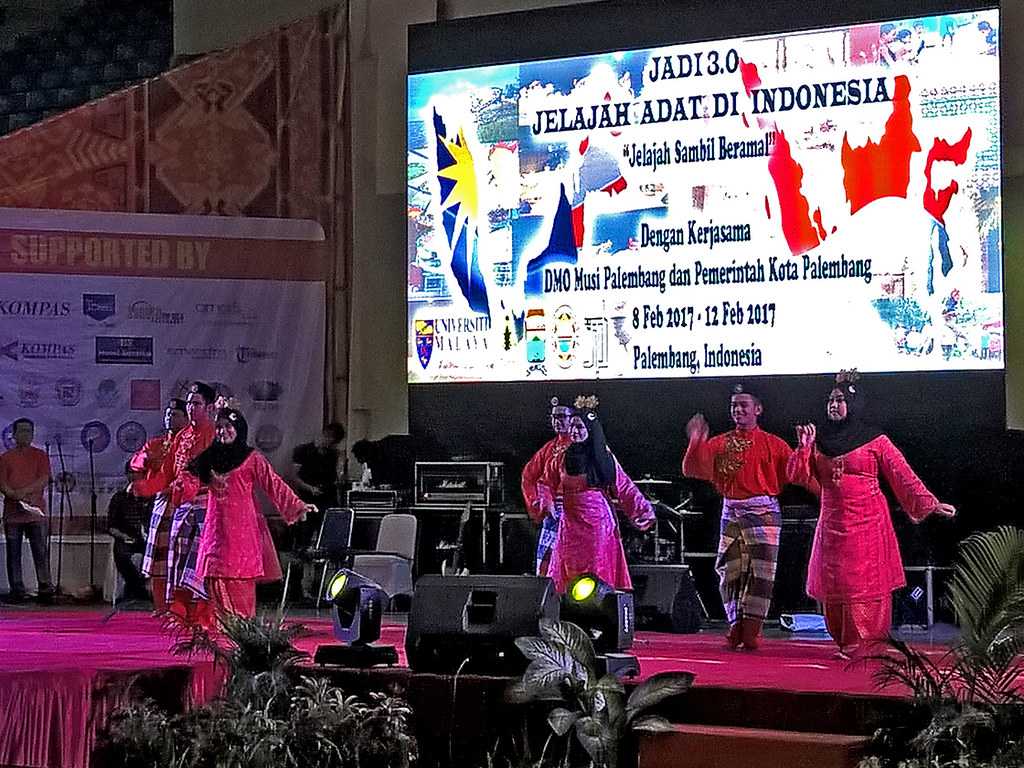
General Tradition
This dance form is an enchanting concoction of Islamic teachings with elegant body movements. That is why Zapin was only performed by men earlier. Later it was performed in pairs with ladies.
The Musical Element
Zapin can be performed with considerable variation depending on different styles and dance steps. Zapin is done to the tunes of Rebana (drum), Dok, Marwas (bongos), Rebab, Gambus and accordion.
3. Silat
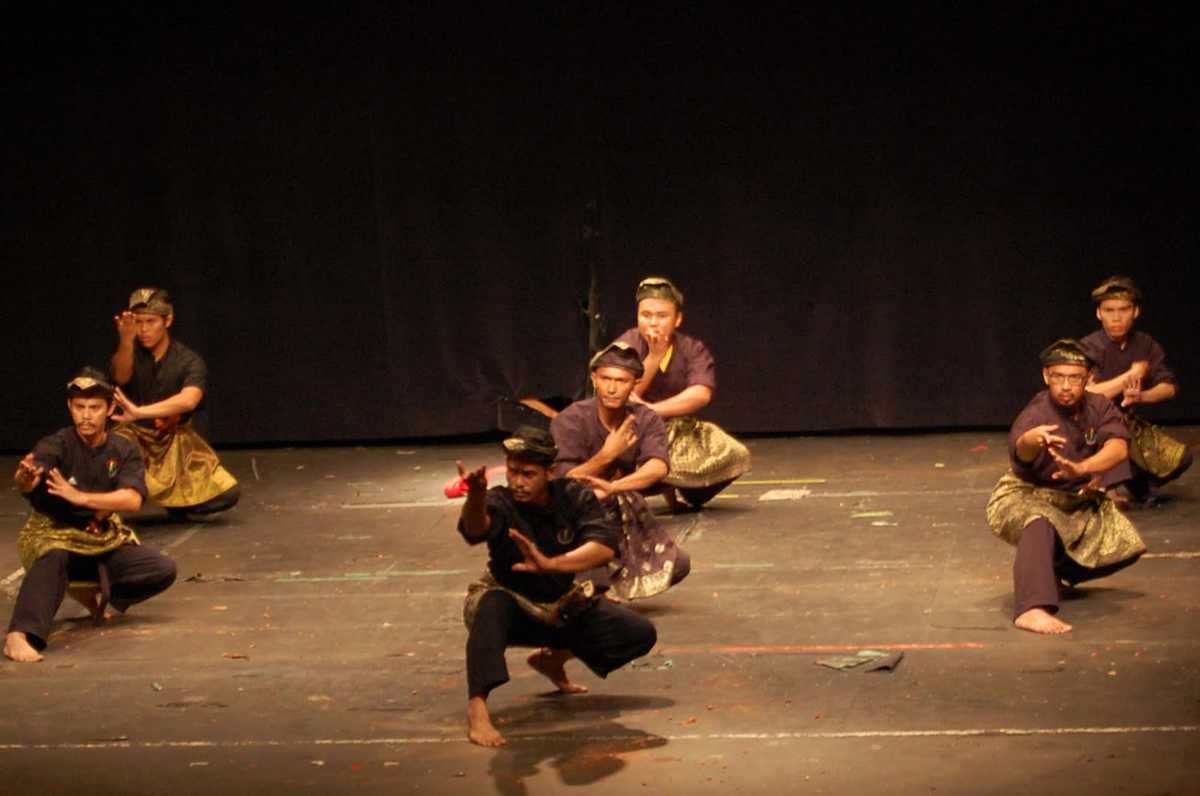
Silat or Pencak Silat is the artistic translation of a deadly martial art form of Malaysia. Originating from Indonesia, Silat is a fierce combat technique to save and free people from foreign invasions.
General TraditionPassed down to generations as a martial art form of self-defence, Pencak Silat evolved into a sport and cultural dance later. This is also one of the dances of Malaysia that are performed at weddings and royal ceremonies. It can be both a solo or a group activity. This dance is profusely annealed into other Malay dances like Inai.
The Musical Element
The music played during the performance is called Tanji Silat Baku or Gendang Baku in Malaysia. The instruments used differ depending on the region. However, in Malaysia, the Gendang (drums) and Serunai (Oboe) are common. The Malaysian version of the music is very close to Thai music.
Highlights
Silat holds the status of UNESCO Intangible World Heritage distinction as it depicts values like the camaraderie and social order. Pencak Silat focuses on animal heritage, ancient weaponry and coordinated footwork. The hand movements are both offensive and defensive, reflecting the defensive mechanism. While there can be variations in the dance steps but the fundamental principles remain unchanged. Silat is one of those dances of Malaysia that exudes powerful energy and inculcates a feeling of self-reliance both in the viewer and the performer.
4. Branyo
Branyo is a Malaysian dance that was introduced in Malacca by the Portuguese colonists. It is an extension of a Portuguese folk dance Corridinho from Algarve.The Musical Element
Branyo is performed to four rhythms - Jingli Nona, Canji Papa, Che Corte and Sarampeh.
5. Dikir Barat

General Tradition
Dikir Barat has four components - Tok Juara (leader), Tukang Karut (song initiator), a chorus of members (awok awok) and a percussion ensemble with music similar to Indonesian folk style. This dance of Malaysia is renowned as the battle of wits as it involves a spontaneous continuous flow of rhythmic verses to mock and criticize the opponent. Tok Juara sets the theme for the performance and binds the group together. He or she discusses contemporary and social issues. The leader needs to be charismatic and quick-witted to rebuttal. Tukang Karut initiates the responses and challenges the competing groups.
The Musical Element
Awok Awok is the cluster of people who second their leader by singing - accompanied by synchronized hand movements. Awok awok remain seated cross-legged throughout and make rhythmic movements with arms, hands and upper torso.
6. Terinai
Terinai is one of the traditional dances of Malaysia. It hails from the Malaysian countryside.General Tradition
Earlier it was restricted only to Berkhatan (circumcision) ceremony at the royal palace, but slowly it permeated into the wedding ceremonies of the common man. Today, Terinai is performed at the Inai (Henna) ceremony of the bride to be. Hence the name!
The Musical Element
The music is subtle and is played with Serunai (double reed), Gendang Ibu and Anak (drums) with a double gong.
Highlights
To perform Terinai, one has to be very flexible as it involves a lot of back bending, backward crab walking and suspending the body on a bamboo stick backwards. Terinai makes jaws drop with strenuous dance steps that are effortlessly performed by the dancers. Indeed, Terinai is a fascinating watch.
7. Asli
Dated back to the 14th century, Asli is the slowest of all traditional dances of Malaysia. Asli meaning "original" is said to be the first one of the four primary genres of Malay dance.General Tradition
Owing to its soft and gentle rhythm, Asli is a graceful dance form where every movement has a meaning. Every step starts and ends with the beating of the gong at a count of eight. The dance is supported by Pantuns (poems) that depict affection and sorrow.
The Musical Element
Asli is performed to native instruments like Rehab (a string instrument), a Gong, Rebana or Gendang Bebano (hand drum). In the 16th century, people started to incorporate foreign instruments like violin and accordion too.
Highlights
Love ballads called Dondang Sayang are a highlight of the dance of Malaysia. Asli is very popular in Malacca and is said to have traces of both Peranakan and Portuguese culture.
8. Mak Inang
Also known as Si Kembang Cina, Mak Inang is a traditional dance of Malaysia that is performed with graceful foot movements.General Tradition
It originated as a source of entertainment for the royal family. Gradually it evolved and now is performed at weddings. Long scarves are held in hands like props while performing, which add to the charm of this dance form. The male costumes involve Baju Melayu, Sampan - a form of sarong and Songkok - a traditional cap. The female outfits include Baju Kurung, Baju Kebaya, Sampan, Selendang (a kind of a shawl) and beautiful flowers on the head called Cucuk Sanggul.
The Musical Element
Sultan Mahmud Shah composed the music from the Sultanate of Malacca. It is heavily influenced by Chinese culture. Traditional Malay instruments like Rebana and Gendang are used.
9. Jikey
Jikey is a dance form that is popular in the Malaysian states of Kedah and Perlis. It is linked to the singing of Zikir and has elements of other dances of Malaysia like Mak Yong, Hadrah, Bangsawan and Mek Mulung.General Tradition
The grace of this dance comes from interactive dialogue, coordinated movements, music and local legends.
The Musical Element
Jikey can be performed both with and without instruments. The instruments include Rebana, tambourine, a knobbed gong, pairs of Cerek (bamboo stampers), a pair of Kesi, Violin, Rebana and an Oboe.
10. Ngajat
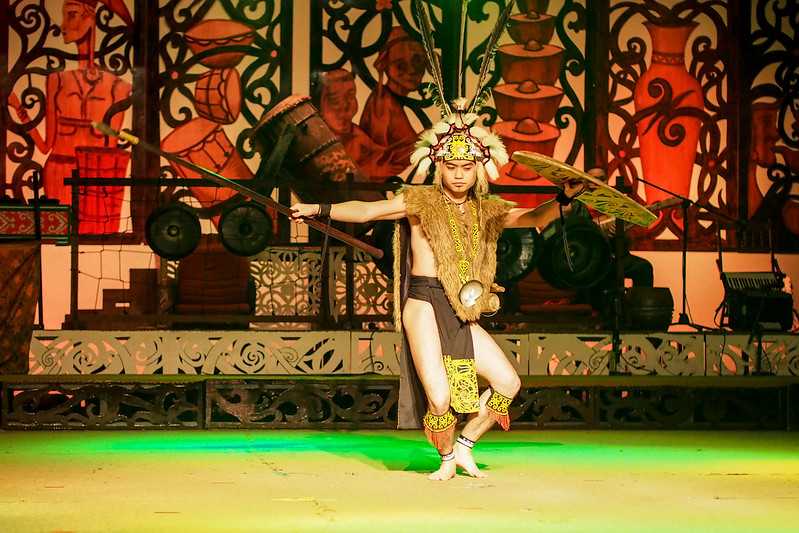
General Tradition
Today, Ngajat is also one of the celebratory dances of Malaysia as it is performed during the annual harvest festival called Gawai Dayak. The females are adorned with an enchanting headdress, hooks tied on the chest, a piece of cloth wrapped around the waist, foot accessories with dainty earrings. The males wear traditional costumes like Gagung (a thick mesh made from animal skin) along with feathered hats.
The Musical Element
Amongst musical instruments, Bebendai (medium and large gongs) and Engkurumong (a set of small gongs) are used.
11. Ulek Mayang
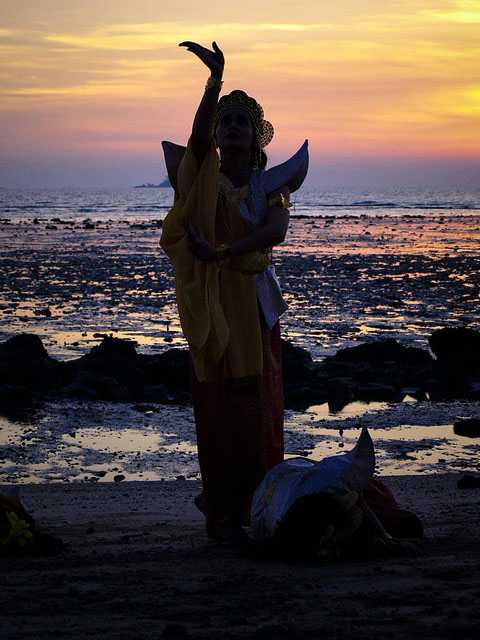
General Tradition
The legend behind the dance highlights the battle between six sea princess and a Shaman till the eldest princess put an end to it. Ulek Mayang is considered to be an ode to the powers of the sea ever since.
The Musical Element
The music accompanying this dance of Malaysia is played by drums, accordion, violin and gong. Ulek Mayang revelled in glory till the recent Islamization movement over the decades.
12. Mak Yong
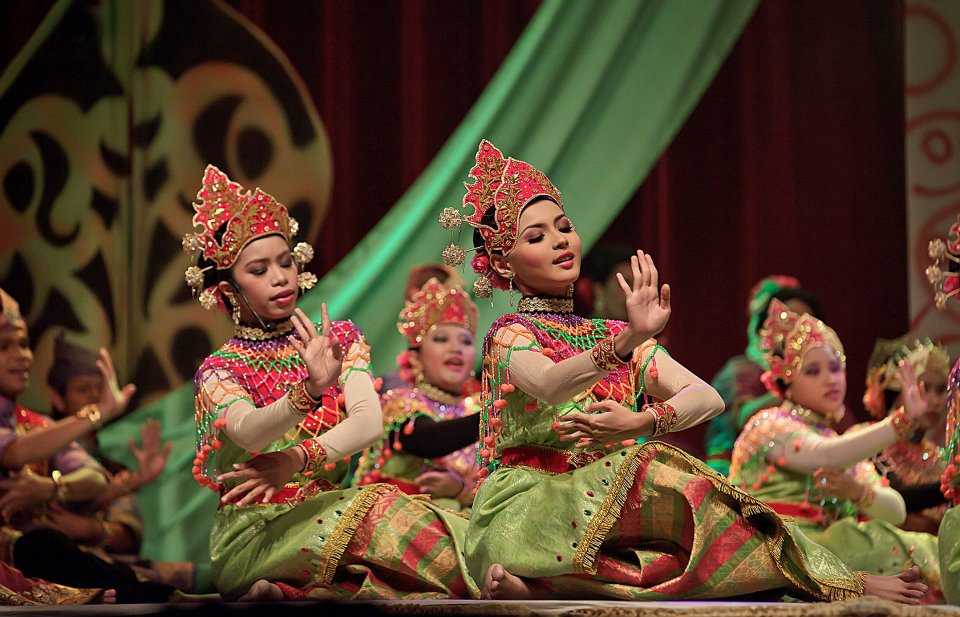
General Tradition
The drama commences with the introduction of the characters. The performers remain seated in reclining or sitting position throughout in a circle. The element of dance is seen within the circle when the scene changes. The dance steps of the ladies are soft and elegant that reflect Indian culture whereas men bring in liveliness and exuberance to the dance.
The Musical Element
Mak Yong is a splendid dance form that weaves dance, music, acting, singing and storytelling together. The performance starts with paying respect to the musical instruments.
13. Menora
Coming from Southern Thailand, Menora is a dance drama that is primarily performed in the Northern states of Malaysia.General Tradition
Menora is characterised by an invocation, dance by the main lead along with a skit. Menora is a delightful dance of Malaysia with slow movements of legs, fingers and arms. Menora is rooted in the Thai legends of Manohara that are derived from Buddhist Jataka Tales. Menora is infused with the Malay language and Mak Yong dance form. In the Malaysian state of Kedah, Menora is performed in Thai and local dialects, but the invocation is done strictly in Malaysian style.
The Musical Element
Popular musical instruments used for this dance are a pair of small knobbed gongs, wooden sticks, a pair of hand cymbals, a barrel-shaped Kendang, a reed instrument and a single-headed drum.
14. Sumazau
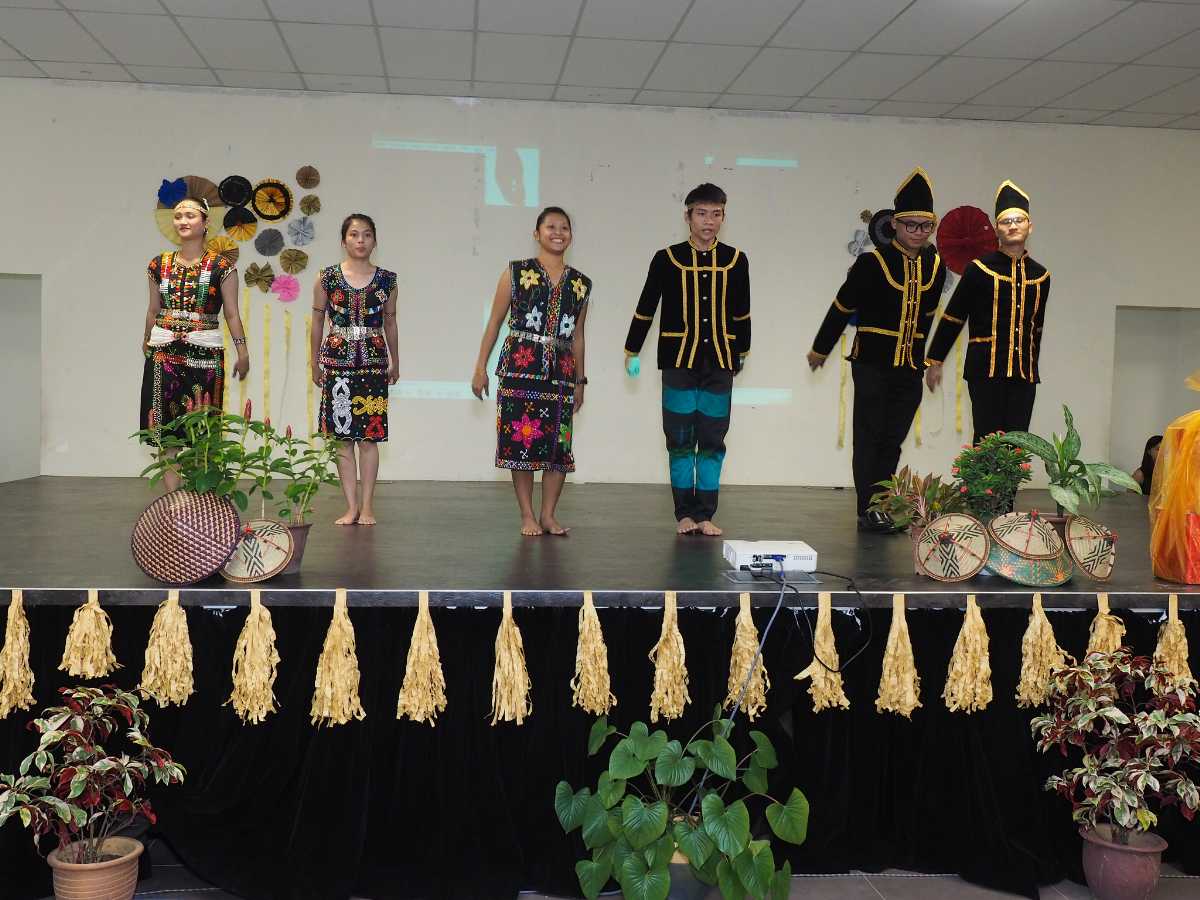
General Tradition
Sumazau is commonly seen during the harvest festival in May. It is the dance of the farmers where both males and females are dressed in traditional black and red attire. Sumazau is inspired by the flying patterns of the eagles that were observed by the farmers during harvesting. While dancing, it is ensured that the dancers are positioned a few centimetres away from each other to avoid touching the other performer.
The Musical Element
Sumazau primarily makes use of gongs and drums. This dance is also performed on Thanksgiving and to appease the Gods.
15. Magunatip
The crowning glory of the Murut tribe, Magunatip is another of the traditional dances of Malaysia from the state of Sabah. Also known as the Bamboo Dance, this dance requires a lot of practice, precision and synchronicity.General Tradition
The dancers dress up traditionally with larger than life headdress made of feathers. The dance starts with two dancers sitting on opposite sides who tap the bamboo sticks slowly and then increase the pace. Two dancers jump on clapping bamboo sticks to the beat of the gong. Magunatip requires a lot of dexterity as one small mistake can lead to serious injuries.
The Musical Element
The Murut tribe believes the clapping sound of the sticks wards off evil spirits and keeps the village prosperous. With spectacular attire of the dancers to the skills of the dancers, Magunatip honours the rituals and belief systems of the Malaysian tribe.
Highlights
Magunatip stands strong in the tribal values of headhunting, paganism and other healing ceremonies. Magunatip was considered to be the dance of the warriors who returned victorious after headhunting.
Other lesser-known dances forms of Malaysia are - Gamelan, Asyik, Lilin, Kuda Kepang, Kenyalang and Buluh.
The above-mentioned dances of Malaysia are taught globally and locally. These cultural dances give a sneak peek into the Malaysian traditions and customs. With every dance form being a celebration of history, legends and tribes, Malaysian dances are simply glorious.
